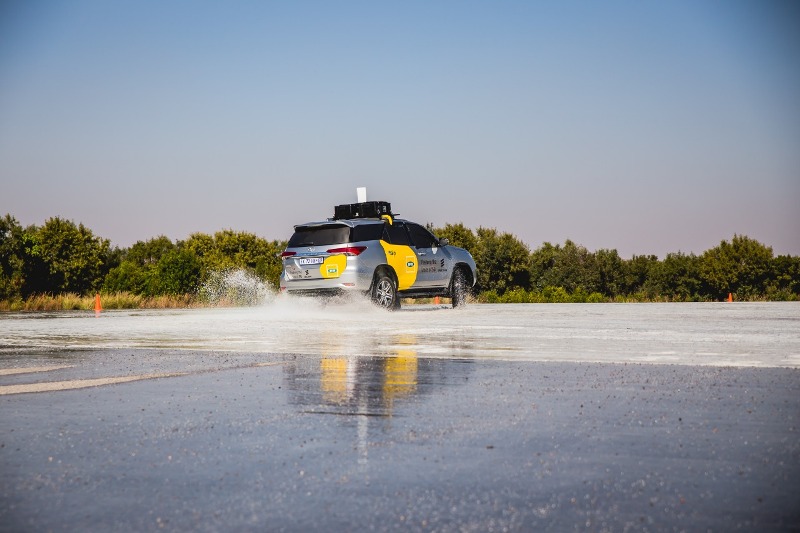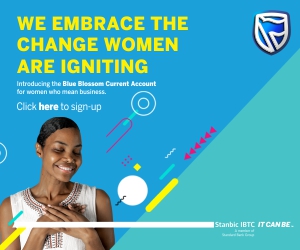GROpinion
5G and COVID-19: The technology, conspiracy and ignorance


By Emeka Oparah
One would ordinarily have dismissed the “controversy” around 5G technology and the strange connection with COVID-19 being stridently pursued by some people as ignorant rants occasioned by the morbid fear of the rampaging Coronavirus, but with the prevailing circumstances of fear and tension, I have elected, as one familiar with the workings of the telecommunications industry, to say something.
Several years ago, I was part of a global campaign by mobile telecommunications operators to debunk a widely held belief that telecommunications base stations emitted radiations that led to Cancer. As an organization, my employers then spent a lot of money on an awareness campaign to explain that the radiations from telecommunications base stations were within the safe limits and definitely not injurious to health. It worked then and saved the operators a lot of trouble. I hope I succeed this time in helping to clarify this particular issue and stop these manipulative charlatans in their tracks. It has to be stated,though, that times like these are fertile moments for mischief-makers and conspiracy theorists to peddle their virulent wares taking undue advantage of the fears and vulnerability of the people, especially the ignorant and the illiterate. So, while we are keeping safe, we must remain vigilant and ever ready to challenge Fake News and outright lies wherever and whenever.
First, let’s discuss 5G. What is it? To understand 5G, we must first understand G. G stands for generation. So, 5G means 5th Generation Mobile Technology. Most mobile telecommunications operations are currently running on 4G (4th Generation LTE and high-speed mobile internet). Before now, we have had 3G (voice and mobile data) and 2G (digital voice) and 1G (analog voice), of course. It must be admitted that the mobile telecommunications industry is probably one of the most innovative and fastest developing of all. Perhaps, the other will be television and aviation. Lest I digress, 5G is the next level, after 4G, and will “elevate the mobile network to not only interconnect people, but also interconnect and control machines, objects, and devices”, according to Qualcomm. Continuing, the technology research and development company says “5G will deliver new levels of performance and efficiency that will empower new user experiences and connect new industries. 5G will deliver multi-Gbps peak rates, ultra-low latency, massive capacity, and more uniform user experience.”
5G is similar to 4G but it has much better speed, low latency and has capacity to take more users. It has the capability to enhance the broadband we know today to do more, connect more people and devices and generate more revenue.it is indeed super-fast and has a much smaller cell site than what we already know. And that is no surprise as the world seems to be going smaller, especially in the world of technology. Comparably, 5G is a unified platform that is more capable than 4G.
Here’s how Qualcomm classified the advantages of 5G:
A. Enhanced Mobile Broadband: 5G will not only make our smartphones better, but it will also usher in new immersive experiences, such as VR and AR, with faster, more uniform data rates, lower latency, and cost-per-bit.
B. Mission-Critical communications: 5G will enable new services that can transform industries with ultra-reliable/available, low latency links—such as remote control of critical infrastructure, vehicles, and medical procedures.
C. Massive Internet of Things: 5G will seamlessly connect a massive number of embedded sensors in virtually everything through the ability to scale down in data rates, power and mobility to provide extremely lean/low-cost solutions.
D. A defining capability of 5G is also the design for forward compatibility—the ability to flexibly support future services that are unknown today.
In essence, this is technology that will redefine the way we communicate, entertain, shop, and generally love our lives. If you think 3G and 4G changed the aforementioned, 5G will transform them. By the way, there isn’t much more you really need as a user to know about how 5G is delivered to your device, your device or your home, except that you should get ready for new realities-devices, content, apps, lifestyle. Medical scans and other results will also be delivered much faster than ever before. I still treasure the video of the Esophagoscopy test I did 5 years ago! I know Tito and Muna, my twins will forever cherish the video of their first steps and first words! I’m keeping them safely in iCloud! Now to the conspiracies around 5G and the untenable and fallacious connections to the Coronavirus pandemic.
It is customary in times of strife and great difficulties for bad guys with a proclivity for mischief to take undue advantage of the emotions, the fears and the vulnerabilities of others to peddle all sorts of nonsense including Conspiracy Theories. I must say here that people in that business are usually clever, but they are more often than not clever by half. On the issue of the relationship between 5G and Coronavirus, nothing can be more ludicrously deceptive. The choice of this moment to change the narrative against 5G makes it all too obvious. There has been a strategic campaign against the 5G technology driven by business and diplomacy and propagated by an orchestrated campaign to discredit the innovation. How it got twisted to establish a link to Coronavirus is perhaps the most important argument to debunk the fables.
I would rather not rehash the claims and allegations by those who are behind the fallacious pretensions to intellectualism, so we do not lend further currency and even credence to them, but suffice it to say that the Conspirators refer to two theories to support the claim that 5G accelerates the new coronavirus. Firstly, that 5G might suppress the immune system and, secondly, that viruses can communicate through radio waves. Of course, neither of these theories is backed up by evidence and indeed the new coronavirus is also affecting countries and regions where no 5G is currently present. So what are we even talking about?
The most important point here is that those who should know have come out strongly to debunk them. The UK government yesterday came out with perhaps the strongest rebuttal of these figments of the fertile imagination of some self-styled scientists. “There is absolutely no credible evidence of a link between 5G and coronavirus,” the UK’s department of Digital, Culture, Media, and Sport (DCMS) tweeted, noting that “inaccurate information” was being spread online about 5G. The DCMS pointed to research debunking the supposed link between 5G and the coronavirus, as well as links discussing the actual cause of the infection — direct exposure to COVID-19 particles spread through physical contact, not radio waves.
Trade association Mobile UK, a group which represents all of the major UK carriers, issued a statement, calling the conspiracy theory “baseless” and “not grounded in accepted scientific theory’, and noting that “some people are also abusing our key workers and making threats to damage infrastructure.” The statement read in part: “During this challenging situation, it is concerning that certain groups are using the COVID-19 pandemic to spread false rumours and theories about the safety of 5G technologies. The mobile industry is putting 100% of its effort into ensuring that the UK remains connected and the Government has rightly recognised our workers and the mobile operators as critical to the national effort.”
Continuing, it said: “The theories that are being spread about 5G on social media are baseless and are not grounded in accepted scientific theory. Research into the safety of radio signals including 5G, which has been conducted for more than 50 years, has led to the establishment of human exposure standards including safety factors that protect against all established health risks.”
Categorically speaking, there is no evidence that 5G networks are harmful to health.
Like the previous generations of wireless network technology (4G, 3G and 2G), 5G mobile data is transmitted over radio waves. Other types of technology that use radio waves include smart meters, TV and radio transmitters, and radar and satellite communications. Most modern medical laboratory equipment use radio waves, some use nuclear radiation, but they are used within the guidelines. By the way, every medication has recommended dosage. Even too much food and drinks can become injurious to health. This is basically the same principle on which radio waves operate. There are acceptable safe limits, which are determined, specified, regulated and supervised by International Technology Regulatory bodies. That is a universal truth in international best practice. practice.
According to Kate Lewis of Full Facts, “Radio waves are a small part of a wider electromagnetic spectrum of waves, which all emit energy called electromagnetic radiation. Radio waves are found at the low-frequency end of the spectrum and—alongside microwaves, visible light and heat—only produce non-ionising radiation. This means that these waves cannot damage the DNA inside cells, which is how waves with higher frequencies (such as x-rays, gamma rays and ultraviolet light) are thought to cause cancer. To improve the speed and capacity of our wireless technology, 5G uses a higher frequency of radio waves compared to its older generations. The frequency of this new wireless technology remains very low: the maximum levels of electromagnetic radiation measured by Ofcom were about 66 times smaller than the safety limits set by international guidelines. Public Health England states that “the overall exposure is expected to remain low relative to guidelines and, as such, there should be no consequences for public health.”
Continuing, Lewis wrote: “The Daily Star quotes an “activist and philosophy lecturer at the Isle of Wight College” saying that electromagnetic radiation from 5G suppresses the immune system, helping the virus to thrive. As mentioned above, the level of radiation from 5G is far below levels of electromagnetic radiation thought to cause damage to cells in the human body. The second theory appears to be that “viruses “talk to each other” when making decisions about infecting a host”. This is not true. The Daily Star article links to a 2011 research paper which suggested that bacteria may produce electromagnetic signals to communicate with other bacteria. This hypothesis is disputed, and refers to bacteria and not viruses like the new coronavirus.
“The new coronavirus is also spreading in places without 5G networks. There are many parts of the UK that do not have 5G coverage yet, but are still affected by the virus (for example, Milton Keynes and Portsmouth). There are no 5G networks at all in Iran, yet this country has been severely affected by Covid-19 (at the time of writing, Iran had the sixth-highest number of reported Covid-19 cases and fourth-highest number of deaths of 177 countries and regions in the world).”
It is regrettable and highly unfortunate that people should prey on the vulnerability and fears of others in a critical time like this. One would even begin to wonder which generation of mobile technology facilitated the spread of the Spanish Flu aka Influenza, which ravaged the world between 1918 and 1920 and killed over 50 million people worldwide including 500,000 Nigerians! What is even more regrettable is the tendency of otherwise educated, enlightened and widely travelled even influential people to lend credence to these fallacies and flights of academic fantasies by either sharing them without commentary or propagating them as truths and facts.
In the long run we are all dead, so said the fatalistic Social Economist Thomas Keynes. We are already surrounded by televisions, refrigerators, microwaves cookers and ovens, wireless electronics, computers and all sorts of mobile devices in addition to the radiations we experience during visits to medical laboratories for one health-related investigation of the other. Why cause panic with 5G? The law of unity and conflict of opposites presupposes that everything we eat to stay alive ultimately contributes to killing us, one way or the other. It is preposterous to single out 5G technology particularly at this time. I will NOT forget that the United States is not particularly pleased that China beat her to the race for 5G, the reason Huawei Technologies has suffered tremendous (apologies to President Donald Trump) persecution in the hands of the US government. In the end, facts are facts, fiction is fiction. Science is fact not fiction. Stay woke! Be safe! Thank you!
Emeka Oparah, leading Corporate and Crisis Communication Expert, writes from Lagos.
Columnists
Cybersecurity in 2024: Towards Ever Greater Sophistication of Tactics


Writer: CHESTER WISNIEWSKI, Director Global Field CTO, Sophos
With 2024 fast approaching, what are the results for 2023 and what are the developments in the threat landscape for this new year?
The year 2023 was marked by persistence in the tactics of cybercriminals, with the predominance of ransomware, the exploitation of vulnerabilities, theft of credentials and even attacks targeting the supply chain. The common point in all his attacks is their formidable effectiveness.
It is therefore essential to ask what trends will persist in 2024 and what strategies businesses should adopt to deal with these future cyber threats.
Between persistent trends and evolving cybercrime tactics
In 2024, the threat landscape is not expected to change radically, particularly with regard to attack typologies and criminal tactics and procedures.
Criminal groups still primarily focus their attention on financial gains and ransomware remains their weapon of choice. These cybercriminals tend to take the easy way out by opportunistically attacking unpatched security vulnerabilities.
The recent Citrix Bleed attack demonstrated the agility of cybercriminals when it comes to quickly and effectively exploiting these new vulnerabilities.
However, once patches are applied to these vulnerabilities, cyberattackers tend to revert to more common strategies of stealing credentials or, failing that, cookies or session cookies, which, while slightly slower, constitute always a proven means that allows them to penetrate within a system.
In 2024, however, we should expect increased sophistication in defense evasion tactics, particularly due to the generalization of certain technologies such as multi-factor authentication. These attacks will combine malicious proxy servers, social engineering techniques and repeated authentication request attacks or “fatigue attacks”.
AI and regulations will continue to shape cybersecurity
In 2024, the development of AI will have a positive impact on the efficiency of IT teams and security teams by enabling them to strengthen defenses and work more efficiently, including through the processing of vast volumes of data in the aim of detecting anomalies. It should make it possible to respond more quickly in the event of an incident.
Indeed, analysis of attacks in 2023 showed a shortening of the time between network penetration and the triggering of a final attack – using malware or ransomware. The need for rapid detection and response tools to prevent costly incidents is therefore essential.
Finally, regulatory developments could have a major influence on measures taken against ransomware. The need to take more substantial measures could push some states to penalize the payment of ransoms, which would represent a brake on malicious actors and change the perspective of companies in the event of an attack.
Other stricter legislation, such as the implementation of the European NIS2 Directive, is also expected to force companies to take additional measures, particularly regarding their abilities to collect data sets.
To protect themselves against increasingly rapid, effective and costly attacks, companies will need to strengthen their defenses by equipping themselves with tools that allow them to detect and respond to incidents more quickly.
The worsening cybersecurity talent shortage does not appear to be as serious as some studies claim. On the contrary, companies have implemented more lax hiring criteria and more open-mindedness in the recruitment process.
From this perspective, to guarantee their survival in a constantly evolving threat landscape, companies have every interest in establishing partnerships with cybersecurity experts whose main mission is to make the hyperconnected world safer, to advise and assist them. in setting up effective defenses.
GROpinion
The Internal Threat: The Hidden Face of Corporate Threats


Businesses today face many threats; but if those coming from outside are their main source of concern with a priority focus on ransomware, they too often forget to consider internal threats which can be just as devastating.
In fact, they take less time to assess the adaptability of their internal security measures in case a cyberattacker manages to break through their defenses from the inside and recover sensitive data that is easily accessible to him. So, what are the means to put in place to detect these threats and respond to them effectively?
The sources of these insider threats are diverse and very often undetected or detectable. They can thus be the result of negligence or even malice.
They can, for example, come from an implementation of relaxed security controls that do not apply to certain systems, or from a lack of logging and identification of these malicious activities.
Although, difficult to measure – since they are rarely the subject of dedicated reports – these internal attacks have already affected many companies.
What are the reasons for the appearance of these threats?
Intentionally or not, insider threats are legion. For example, when an employee carelessly forgets a USB key containing copies of critical information on the train, he then neglects to comply with all the rules in force.
This type of situation can be tragic for the company since there is therefore a risk of theft or public exposure of information that could lead to a violation of official regulations imposed by a governing body (usually GDPR, PCI and HIPPA) or by several regulatory bodies’ premises.
The company must then be extremely transparent by disclosing to its employees – and more broadly to the general public – that it has been the victim of a data breach within the organization, and it must also be held accountable. of all actions associated with this data breach.
But it can also be actions triggered intentionally for a wide variety of reasons. An employee may, for example, realize that he has the possibility of carrying out a malicious action in his workplace because of relaxed controls or because he has high visibility.
This type of situation can lead to the theft of confidential information belonging to the company. The employee then seizes this opportunity to harm the company with impunity.
Various flaws and patterns
Cybersecurity experts have identified three distinct insider threat motives which are revenge, greed, and inattention.
The first two reasons include, for example, intentional and accidental acts, and are more likely to occur following a dismissal or a resignation. However, these reasons vary according to the type of activity of the company.
In the case of the defense sector, it can be corruption or espionage, unlike the ICT sector, where commercial data theft is more widespread.
Employees in charge of selling products and solutions can thus save their customers’ contact details in files and programmers can steal the source code. Despite their media coverage, on the whole, cases of espionage or sabotage remain, fortunately, exceptions.
More generally, data leaks are often caused by insider threats, when sensitive information belonging to the company becomes “uncontained”, when it should be classified confidential according to the operational context.
This information then becomes “public” and people whose position has nothing to do with it can consult it. Very often, when businesses are faced with such accidental data loss or leakage, it is the result of carelessness, inadvertence or clumsiness – such as the loss of mobile devices, USB storage media or public exposure of repositories stored in the cloud.
The classic example of accidental data release comes from the use of the “To” and “CC” fields when sending an email to multiple external recipients, where personally identifiable information is exposed to all of these recipients; a situation that could have been avoided by using the “CCI” (blind copy) mode.
Finally, data destruction is also a typical action where the integrity and availability of data is taken away from the business.
This has the effect of preventing him from accessing critical information, which can directly impact the operational capacity of the company. While this activity is mostly associated with ransomware operators, it can also be attributed to insider threats.
It should be borne in mind that there are many reasons that could lead to such acts, but the main reason remains that the data is generally stored in a weak way, which allows too many people to access information that has nothing to do with the tasks entrusted to them.
These people can steal sensitive data for revenge, but also destroy it or remove it from the company or even try to extort its return.
How can we best respond to these threats?
The implementation of a strategy to prevent these internal threats remains difficult to implement, since once the attack has been launched, anticipation and control are already outdated. It is therefore extremely important to set up preparation sessions aimed at determining the impact of these attacks.
Thus, training employees in the correct use and understanding of internal company systems and processes can go a long way towards avoiding errors associated with accidental data leaks.
In addition, it can be useful to turn to several solutions and tools such as file and document management systems to better manage the critical data that the organization has in its possession. ZTNA limits access to only required tools/services/apps rather than everything on a company’s LAN.
It is also possible to employ Data Leakage Prevention (DLP) tools, capable of preventing accidental data leaks – except in the case of intentional theft. XDR systems and firewalls can also be very useful as part of the disaster prevention and recovery plan because they allow DLP to be implemented and log access and data movement at the same time. Their actions facilitate forensic work, particularly in understanding failures and their consequences.
Finally, the implementation of technical controls capable of regulating access to data and systems that contain sensitive information, as well as the monitoring of the results of these controls and the responses to violations of the security policy contribute to the detection of ‘a malicious attack in progress.
To protect their company and their employees from these internal threats, managers must imperatively limit access to the data to the persons concerned and ensure the implementation of strict controls on the most sensitive data, while providing them with the support they need.
In essence, therefore, the right balance must be struck between people, process and technology, since any imbalance can favor the introduction of instability, as well as an easier increase and spread of risks – whether they either external or internal to the company.


I’ll start on this by referring you an earlier piece I had written on 17 April, 2021 about Professor Farooq Kperogi when he attempted to hoodwink his readers and Professor Pantami that he was the latter’s friend but still went ahead to disparage him by spewing lies and supposed private matters on the Professor, the piece can be read here.
At that point, I had just switched from being his ardent fan to seeing him for who he really is, a propaganda merchant who thrives on the docility of Nigerians to cash out.
Kperogi had to acknowledge that article as it bursted his little games on 24 April, 2021 in his column tagged ‘On my friendship with Pantami’ and which can be read here.
I read Kperogi piece of today 11th February, 2023 where he attempted to as usual disparage Buhari’s naira policy and linked it as a ploy to stop a BAT and I found the analogy in it very ludicrous to say the least. I wonder why Kperogi has developed a permanent feeling and understanding that Nigerians are extremely daft and so he could spew anything at them albeit hypocritically after cashing out his little coins behind the scene.
Kperogi is a supporter of Tinubu but just like so many Nigerians who share his type of double character, he is finding it difficult to come clean about it, so he is using mind games this time around to blame Buhari and his policy as the reason why Tinubu would fail even though according to him, he doesn’t want it but he would prefer that the failure of Tinubu occurs through ballots and not through sabotage.
However, what Kperogi and the likes who don’t have the audacity and criticality to formulate critical campaign strategies to market Tinubu don’t understand is that the suffering of Nigerians which had largely made them to make up a mind did not start with the naira scarcity and it’s attendant suffering which in my opinion is over bloated by the likes of Kperogi and other propaganda merchants to unfairly blackmail Buhari into succumbing to perhaps use state resources to install Asiwaju as president and that won’t happen because in reality Nigeria has long moved away from such. You have to have some level of popularity to rig elections in any society and rather than campaign enough to get the masses support for Asiwaju, Kperogi and the likes believe the victory must only be gotten through blackmail.
While on my way back from office yesterday, I critically examined the menial marketers like ‘suya’ sellers and the rest, and I saw a normal activity going on as I used to know it and I wondered in my mind where the excessive suffering that was been hyped was? It has also been established and I know that those people in the remote villages that Kperogi attempted to refer to do not need more than one to five thousand Naira to transact and while in the beginning things got a little rough, POS merchants have since gotten cash for them and things are normalizing, so I’m sure that the whole propaganda about suffering is being spewed by some political elements who perhaps see free and fair contest as a threat to their victory and such narrative has to stop quickly because in recent past it was same kind of narrative that made Jonathan loose elections, Nigerians desist such fearful narrative.
Furthermore, Kperogi alluded to the fact that Asiwaju always used billion vans to win his way through elections, assuming without conceding that was true as coming from him, is Kperogi then telling us that he supports a corruption of the electoral system? If anything, is ensuring a free and fair contest by Buhari not worthy of commendation? I can bet you Nigerians especially those from
Northern Nigeria have accepted this policy not because there are not minor and temporary discomfort about it but because they see it from the prism of Buhari doing what he ought to have done a long time ago which was to annihilate corruption and its practices, so it appears the people were ready to bear this brunt in as much as it guarantees free and fair contest.
Speaking about a payback by Buhari after Tinubu had supported him, I have maintained in different fora that the agreement for the reciprocation was a party matter and that had been settled at the primary elections because indeed all stakeholders allowed Tinubu to emerge even though they had other preferences which is normal with every human. However, general elections are a totally different games because there are other contestants and it is a democratic regime we are in where numbers of votes garnered matters most, so Kperogi and co should rather concentrate on fetching votes for Tinubu rather than blackmailing Buhari to hand over powder to Tinubu already baked.
Kperogi supports Tinubu,I knew this penultimate the primary elections, when he kept dropping hammers on Osinbajo, a contract he collected to disparage Osinbajo in the eyes of the northerners so as to pave way for Asiwaju and that worked but the current one won’t work because the ordinary people from the north have bought into it to a large extent maybe not so much from the beginning of it but much more now. Rather than all these intellectual shortcuts, I have advised the APC and it’s campaign to make appropriate recruitments to formulate strategies and such recruitments can be out of the ‘big names’ and the usuals, there are millions of smart boys and girls out there who can beat Kperogi and the likes to their cheap and opportunistic games, Daniel Bwala is one of such examples!
May the best man win for Nigeria’s increased progress, Amen!


-



 News5 days ago
News5 days agoFG Declares May 1st Public Holiday To Mark Workers’ Day
-



 News4 days ago
News4 days agoNigerians Seek Woman Who Spoke Out Eloquently Against Fuel Scarcity In Viral 1994 TV Clip
-



 News3 days ago
News3 days agoAnambra State Government Arrests Man For Marrying Off His Underage Daughter
-



 News3 days ago
News3 days agoIPOB Declares May 30th As Sit-at-home Day Across The Southern East States To Honour Biafran Fallen Heroes
-



 Education2 days ago
Education2 days agoFederal Government Sets To Commence School-To-Work Scheme
-



 News1 day ago
News1 day agoLady Dies After Friends Pushed Her Into Boiling Pot Of Fresh Pepper In Delta State
-



 Finance22 hours ago
Finance22 hours agoEFCC Chairman Tasks Nigerian Youths Against Crimes And Fraudulent Acts






